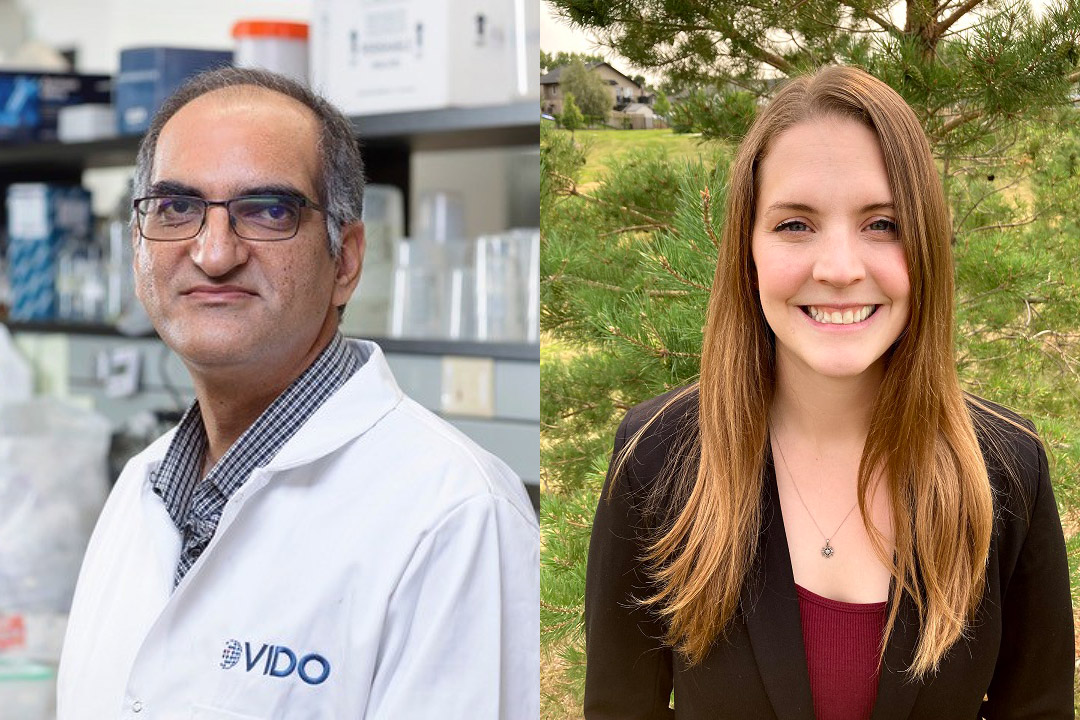
USask teams to establish research programs to better understand and treat serious diseases
University of Saskatchewan (USask) researchers have received more than $930,000 in provincial funding support from the Saskatchewan Health Research Foundation (SHRF) for research addressing pressing health challenges faced by the people of Saskatchewan and impacting global communities.
This funding helps early-career researchers establish themselves and their programs of research at the institution, allowing them to produce the outcomes necessary for further funding success.
“We are grateful for the support of provincial organizations like SHRF that are investing in the bright and innovative minds working to improve our health,” said Baljit Singh, USask vice-president of research. “The pandemic may have brought new challenges to the forefront, but our ongoing health challenges continue to be met with a renewed dedication to discovery the world needs.”
Searching for strategies to shorten tuberculosis treatment periods
Before the COVID-19 pandemic, tuberculosis (TB) was ranked as the No.1 cause of death from infectious diseases. TB is caused by bacteria called Mycobacterium tuberculosis, and mainly affects lungs, but can also infect other areas of the body including the brain, spine and kidneys. TB is typically spread through aerosolized droplets, and its occurrence can be exacerbated by socioeconomic factors such as poverty, crowded housing, co-infection with other diseases (e.g., HIV/AIDS), and limited health care access.
TB is curable with antibiotics, but current treatment regimens are tough, requiring taking up to four different drugs per day over a period of six months to combat the bacteria. Any failure to take medications on time can compromise the entire treatment process, as TB bacteria often forms persistent sub-populations that can eventually become resistant to antibiotics. Because of the necessary strictness of the treatment process, many patients cannot maintain the regimen and thus treatment failures occur. Drug-resistant TB is a major contributor to antimicrobial resistance and is a growing international public health threat.
USask’s Vaccine and Infectious Disease Organization (VIDO) scientist Dr. Neeraj Dhar (PhD) and his research team plan to study the sub-populations of persistent Mycobacterium tuberculosis and will attempt to identify strategies to kill them.
“Antibiotic persistence, having a non-genetic origin, is extremely challenging to study,” said Dhar. “Therefore, we don’t have drugs that specifically target these populations of bacteria.”
Dhar said that introducing these types of drugs into the TB treatment regimen will shorten the time required for treatment, thus making treatment easier and more accessible for TB patients.
Building a better understanding of shoulder rotator cuff disease
USask College of Medicine researcher and director of the Ergonomics Lab in the Canadian Centre for Health and Safety in Agriculture, Dr. Angelica Lang (PhD) said that the most frequent cause of pain and disability in the arm and shoulder is injury to rotator cuff muscles, which is a small muscle group surrounding the shoulder that enables it to move in complex ways and multiple directions.
This common injury, termed rotator cuff disease, often gets more severe with time and can lead to more pain and greater injuries, like rotator cuff tears. The goal of this newly funded project is to understand the mechanics of how the shoulder moves and how rotator cuff disease and shoulder mechanics progress over time.
People from both urban and rural Saskatchewan will be recruited to take part in the study for one year. This will allow the research team to determine if place of residence has an influence on the development and progression of rotator cuff disease.
“It is generally accepted that certain movement patterns are associated with rotator cuff disease, but research has yet to determine if these movement patterns are the cause or the symptom of pain and disorder,” said Lang. “This will be the first step towards empirically defining the relationship of time, pain, and shoulder biomechanics.”
The findings from the study will also lead to more rural-specific testing and treatment recommendations for people with rotator cuff disease in Saskatchewan, including considerations for how to keep Saskatchewanians able to work during treatment and recovery.
Other funded USask projects include:
Arinjay Banerjee, Vaccine and Infectious Disease Organization: $120,000
Discovering the molecular drivers of differential pathogenicity on infection with severe acute respiratory syndrome coronavirus 2 (SARS-CoV-2) and Middle East respiratory syndrome coronavirus (MERS-CoV)
Michael Chamberlain, College of Medicine: $120,000
Development of 3D tissue engineered tumor microtissue models for precision medicine
Michelle Collins, College of Medicine: $120,000
Uncovering Mechanisms of Cardiac Rhythm Disorders
Alyson Kelvin, Vaccine and Infectious Disease Organization: $120,000
Investigation of systemic immune profiles and inflammatory mediators to identify potential therapeutic targets or diagnostics markers in Long COVID patients in Saskatchewan
Jay Shavadia, College of Medicine: $100,923
BEta blocker dEprescription Following coronary artery Bypass graft sURGERy: feasibility and safety pilot (BEEFBURGER Trial)
Jessica Sheldon, College of Medicine: $120,000
More than just allergy: how histamine impacts infection by a multidrug-resistant pathogen

